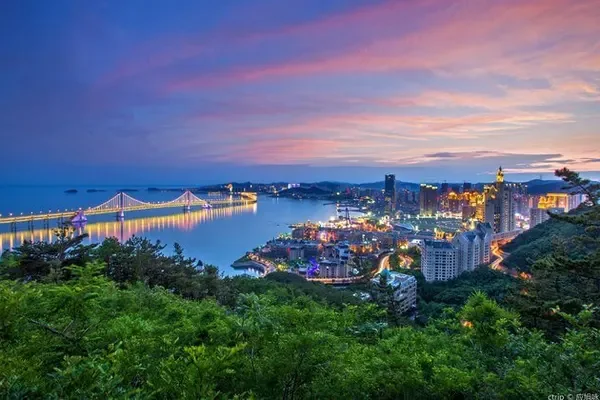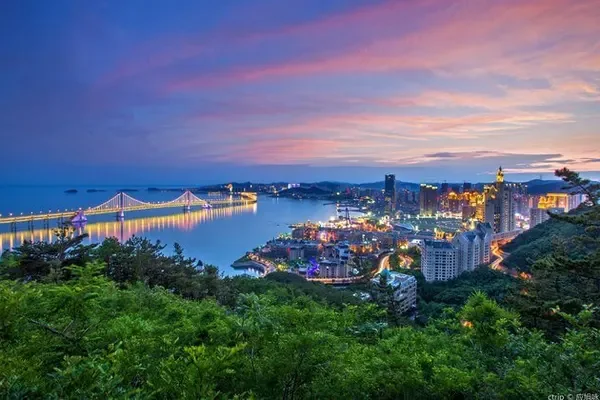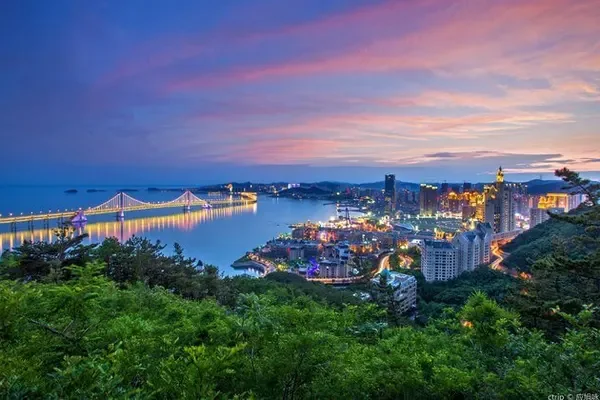During the Qin Dynasty, Taiyuan County was established, and the capital was in Jinyang. Now Jinyang refers to Taiyuan. When Emperor Wu of the Han Dynasty changed Taiyuan County to Bingzhou, the capital was in Taiyuan.
It is said that in the early Song Dynasty, Song Taizong Zhao Guangyi led troops to attack Jinyang. It may have taken a lot of effort and he felt resentful, and the emperor of Tang Dynasty also said that "fengshui is good here, which is the foundation of the king". After the capture, Song Taizong ordered The next big fire burned the city of Jinyang to a clean slate. Still feeling uneasy, they released the Fen River to completely submerge Jinyang. Since then, Jinyang city has disappeared, and the people in the city have moved to a place in the southeast of Jinyang. Rest and recuperate, this place is now Taiyuan.
Hundreds of years have passed, and time has come to the Ming Dynasty. Fu Lin (ancestor of Datong), who had been the chief envoy in Shandong Province, resigned and returned to his home in Fujiaxiang, Taiyuan. The sages in Taiyuan came to him together. Since Song Taizong burned Jinyang City and destroyed Taiyuan's "feng shui", there have been no celebrities and celebrities in Taiyuan mansion. I asked Governor Fu to come forward and come up with a way to change Taiyuan's feng shui. Later, Mr. Feng Shui's field survey , It is determined that building a "Fengshui Pagoda" on the high slope in the southeast, that is, Wenfeng Pagoda, will make everything go smoothly. Therefore, Governor Fu led his son Fu Zhimo to raise funds everywhere, and finally built the Wenfeng Pagoda, with the purpose of "creating the prosperity of the mountains and rivers and the prosperity of the cultural movement". Later it became the "Yongming Temple".
Empress Li, the mother of Emperor Wanli, believed in Buddhism and converted to Buddhism. She worshiped under the name of Master Fudeng, an eminent monk in Mount Wutai. Later, King Jin of Taiyuan invited Fudeng to come to Taiyuan to rebuild Yongming Temple, which was built fifteen feet away from Wenfeng Pagoda. The "Xuanwen Pagoda" was called "Xuanwen Pagoda" for short, and a "relic" was placed at the bottom of the pagoda, so the Xuanwen Pagoda was also called the Relic Pagoda.
In order to expand the hall of worshiping Buddha, the Daxiong Hall was rebuilt. This Daxiong Hall is also a masterpiece in the history of architecture. The whole hall is made of blue bricks without a single wooden beam. It looks like mountains, ridges and tiles. The architectural structure can be described as unique.
When Lin Wei came here to investigate, she stood on the Xuanwen Pagoda, looked at Wenying Lake, and sighed, "Wenying Lake is like an unfolded inkstone, and these two pagodas are two writing brushes, so Taiyuan has produced outstanding talents." Also known as the "Writing Twin Towers".
There is a saying in Shanxi that "go to Ying County to see the wooden pagoda, and Taiyuan to see the brick pagoda". After reading the above introduction, do you think that you must visit the Twin Pagodas when you come to Taiyuan?
If you pay attention to Taiyuan, you will find that there are two towers on the emblem of Taiyuan. Yes, the twin towers above are the "Lingxiao Twin Towers" of Yongzuo Temple, which is also one of the eight scenic spots in Taiyuan.
I have been to Taiyuan many times, but I have never been here. I plan to come here when the peonies are in full bloom, because the "Zixia Immortal" peony in front of the Daxiong Hall is the only one left by the Ming Dynasty in the country. It is already five years old. It is a hundred years old, but unfortunately, due to the impact of the epidemic this year, my wish was not fulfilled. I came to Taiyuan again, so I had to come here with a little regret and visit the famous twin towers.
Yongming Temple later changed its name to Yongzuo Temple, and the locals also called it "Shuangta Temple". Tickets are 30 yuan. After repairs, earth-shaking changes have taken place in the inner courtyard of the temple. With Yongzuo Temple as the core, a twin pagoda park has been built around it.
The Martyrs Cemetery in Taiyuan is on the east side of Shuangta Park. It was built here in the early days of liberation, and now it has been built in an all-round way with the theme of inheriting red culture.
When you come to Yongzuo Temple, the highlights are Daxiong Hall, Ming Dynasty Peonies and Twin Pagodas.
There are many peonies in the temple, and the scale is very large. In the season when the peonies are in full bloom, there must be a graceful and luxurious sea of flowers. Walking among the flowers, you will feel refreshed and refreshed. House. A thousand pieces of Chiyingxia are rotten, and a hundred branches of crimson are lighting up the lamps."
The Daxiong Hall is also called the Beamless Hall. Although the Beamless Hall does not have the airiness and lightness of wooden building materials, it reflects the structural characteristics of wooden materials. Those who are interested in architectural structures can study it carefully.
The Xuanwen Pagoda can be climbed and visited. There are narrow stairs in the pagoda. When two people meet, they can only pass sideways. The steps on each floor are different. About thirteen steps.
Climbing to the top of the tower, the cool breeze blows and you feel refreshed. Looking out from the surrounding windows, the city of Taiyuan looks far away, and the high-rise buildings are lined up in rows, which is too beautiful to behold.
really:
The twin towers of the writing tower soar to the sky,
Tianxuan, the splendid land of Dragon City.
Five hundred years of wind and rain,
Immortal Zixia, the spiritual treasure of heaven and earth.
And said:
Outstanding people are counted in Bingzhou,
The two towers of writing and writing describe the Spring and Autumn Period.
The treasures of heaven are like neon lights,
Yongzuo Temple is a secluded place outside the world.
Attached photo:



